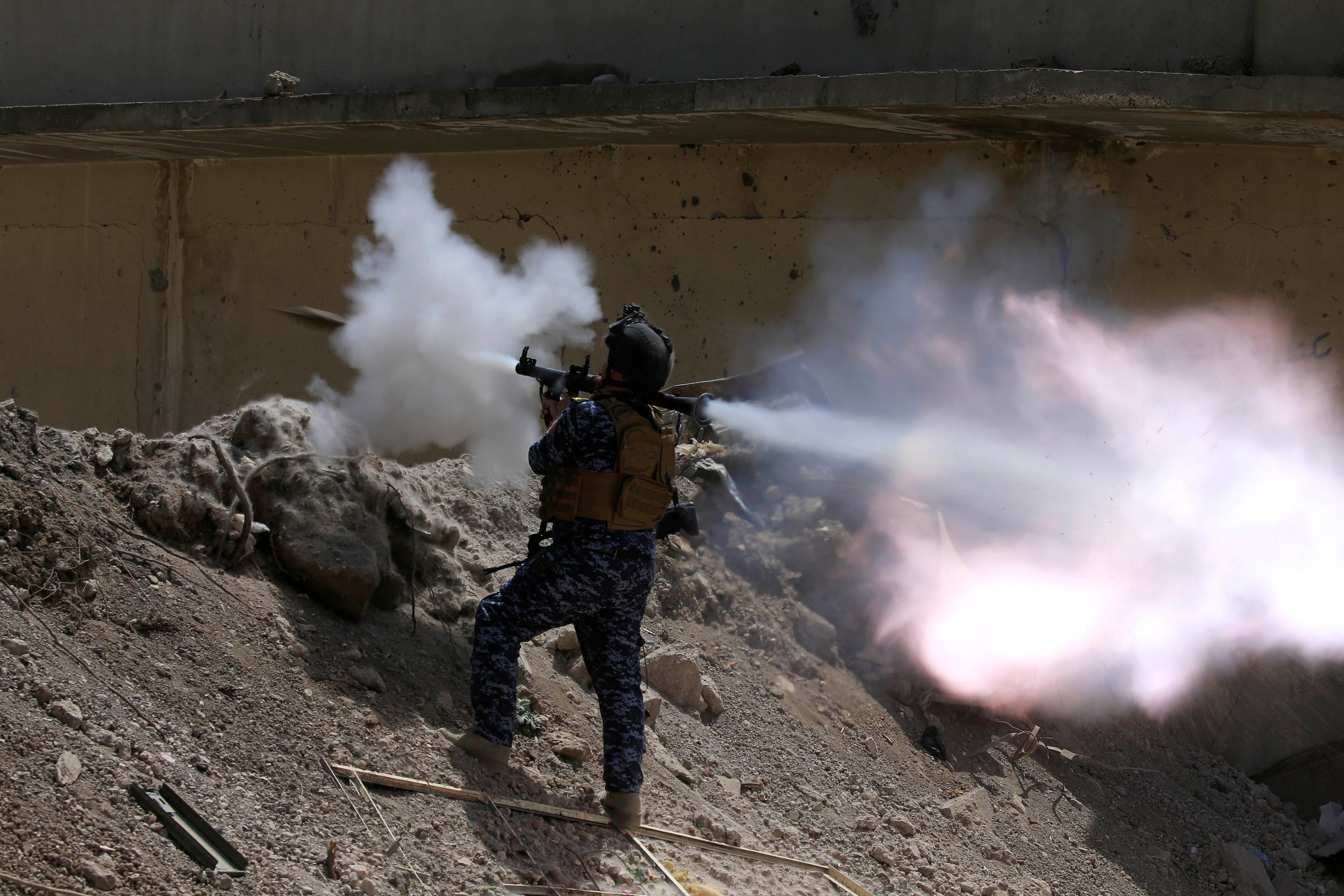
By Rodi Said
RAQQA, Syria (Reuters) – At Raqqa’s eastern edge, a handful of Syrian fighters cross a river by foot and car, all the while relaying their coordinates to the U.S.-led coalition so they don’t fall victim to friendly fire.
This is their only way into al-Mishlab, the first district the Kurdish and Arab militias have swept into, in what the coalition says will be a long and difficult battle for Raqqa, Islamic State’s de facto “capital” in Syria.
The Syrian Democratic Forces (SDF) launched their assault to capture the city this week.
As artillery and coalition aircraft pounded targets in the city, SDF fighters moved in small groups into the district during a media trip organized by the SDF.
“The comrades are advancing and Daesh forces are collapsing in front of us, but there are snipers obstructing our movements, and they are also shelling our positions with mortars,” said an SDF fighter who gave his name as Khalil.
For months, air strikes and special forces from the U.S.-led coalition have helped them encircle Raqqa, which Islamic State seized in 2014 and has used as a base to plan attacks abroad.
In a statement sent to Reuters, coalition spokesman Colonel Joseph Scrocca said the militants’ resistance had been “minimal” outside the city and that they were retreating “to protect their fortifications inside the city”.
A few civilians left farmland near Raqqa on Wednesday, waving white flags to SDF fighters heading toward al-Mishlab on a road littered with blown-up vehicles.
At the gates of the city, a bridge lay collapsed, testament to the air strikes that have left Islamic State with no way in or out except by boat across the Euphrates river.
Large plumes of smoke rose nearby. SDF fighters crossed the river into the district through pathways made of piles of rocks, soil and pipes.
A field commander who gave her name as Clara said fighting continued in some parts of the district. Islamic State militants had drawn on mines, car bombs, and suicide attackers as they sought to defend the district in recent days, she said.
The SDF fighters moved in units of five or less, waiting in bombed-out buildings or trenches for air strikes to clear the way for further advances, they said. With every movement, the unit commander relayed their GPS coordinates for pilots to pinpoint SDF and enemy positions.
Away from the frontlines, fighters in green camouflage uniform, some with colourful scarves wrapped around their heads, unloaded crates of weapons from trucks.
An SDF field commander said the coalition had recently delivered the weapons, including mortar bombs.
“These weapons recently arrived to us because we had sent our fighters for training by coalition forces,” said Ankiza Mahmoud, the commander of an SDF unit, one of many Kurdish female fighters taking part in the attack.
Some of the fighters unloading weapons wore the shoulder patch of the Kurdish YPG militia, the SDF’s most powerful component. Its role in the Raqqa campaign has strained ties between the United States and NATO ally Turkey, which fears growing Kurdish ascendancy along its border.
The United States said last week it had started supplying arms to the YPG for the Raqqa assault, deepening Turkey’s anger. Ankara views the YPG as a part of the outlawed Kurdistan Workers Party (PKK), which has waged a three-decade insurgency within Turkey.
Yet the militia has emerged as the main U.S. parter in the fight against Islamic State in northern Syria.
The shipment of weapons reached the eastern outskirts of Raqqa city on Wednesday, and the newly trained SDF fighters would soon head to the frontlines, they said.
(Writing by Ellen Francis in Beirut; Editing by Tom Perry and Catherine Evans)










